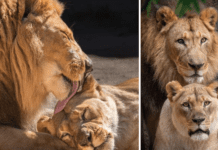The Monal (also known as the Impeyan Pheasant or Impeyan Monal) is one of the world’s most strikingly gorgeous birds. The “nine-colored bird” is another name for this huge pheasant. The bird’s plumage is iridescent and rainbow-like. However, the appearance of the bird is attractive to the eyes, but attempting to analyze (count) the number of colors on the bird may fatigue you.
#1

It is a friendly bird despite its size. The Monal is both Nepal’s national bird and the state bird of Uttarakhand. Previously, the state bird of Himanchal Pradesh was the Monal, but it was later replaced with the western Tragopan, commonly known as jujurana. In Nepal, it is known as Danphe, while in India, it is known as Monal. This lovely bird’s common name is Himalayan Monal, its local name is Monal, and its scientific name is Lophophorus impejanus. It is a pheasant of the Phasianidae family, often known as the Impeyan monal or Impeyan pheasant.
#2


Lady Mary Impey, the wife of Bengal’s British chief judge, was the first person to keep these pheasants in captivity, and the bird was eventually named for her. The two paragraphs that follow describe the look of this colorful bird. You can jump forward to the Monal photos. “A picture is worth a thousand words,” as someone once stated.
#3


Male Himalayan Monals have brightly colored feathers in blue, green, purple, pale yellow, brown, black, and red. They have a white feather patch beneath the base of their tail. The underparts and breasts are black. The nape is a brilliant yellow patch that runs along the upper border of the bluish-black wings and back. In flight, the chestnut brown/copper-colored tail, light brown wings, and white rump are evident. The males have a metallic-green crest on top of their heads, and the females have brilliant green heads. Around the eye, they have an exposed patch of turquoise blue skin. The tail feathers are consistently rufous (reddish brown in hue), with the tips being darker. The male’s tail feathers are evenly rufous, becoming darker towards the tips. The female Himalayan Monal differs greatly from the male. Male Monal is more attractive, with brilliant color and a larger size. Females are more boring than guys. The top regions of females are greyish-brown with white stick lines and black dots. The female’s underparts are pale greyish brown with white stick lines. Their upper bodies are coated with brownish-black speckled feathers. Females have white necks. Females’ lower tail coverts are white with black and rufous markings. The female bears a crest as well.
#4


The first-year male and juvenile are similar to the female, although the first-year male is bigger and has fewer pronounced markings. Females and chicks are brownish in color. Their feathers feature a few white and black stripes as well. Adult Himalayan Monals range in size from 60 to 72 cm. Adults weigh between 1.70 and 2.40 kilograms. Males are a little bit bigger and heavier than females. They enjoy rhododendron and bamboo-filled open, coniferous, or mixed woodlands. Himalayan Monal is inhibited by cold and high altitudes, staying between 2000 and 4500 meters above sea level in winter. They have a high tolerance for cold/snow and may be observed burrowing in it for food.
#5


They are excellent diggers, and their hefty beak is used not just for hunting for tubers, seeds, and insects throughout the day, but also to satisfy their digging need. Monal breeds just once a year, from April to August, and their occupant zone is clearly recognizable by the holes and dug-up area formed. During this time, they are observed in pairs. Males begin calling throughout the day and employ body displays such as bobbing the headrest and fanning their tail feathers to attract females. During the mating season, males tend to become aggressive. They begin mating when the female accepts them. The bird reaches sexual maturity between the ages of one and two years. Monal communicates with other birds in the group/family using a variety of calls. She later constructs a modest nest in the dirt. She normally lays two to five eggs, which are white (or dull/muddy white) with brown markings and a paler look. The female incubates the eggs for around 26 to 29 days, while the male guards the eggs throughout this time. After six months, the young begin to seek food on their own.
#6


The beautiful Monal is an endangered species protected by the Wild Life Protection Act of 1972. This bird’s beauty and appeal had become a curse to itself. Because of their gorgeous feathers, the population of these birds was dwindling. These birds’ skins were utilized as a showcase by stuffing hay with them. People wore the male’s crest as a hat ornament. It is seen as a sign of power and authority, and it confers prestige on the wearer. When hunting was prohibited in the state in 1982, this species received some reprieve. They are mostly found in India, Afghanistan, Pakistan, Nepal, Tibet, Bhutan, and Burma’s Himalayan areas. They are found in Kashmir, Himachal Pradesh, Uttarakhand, Sikkim, and Arunachal Pradesh, in particular.









